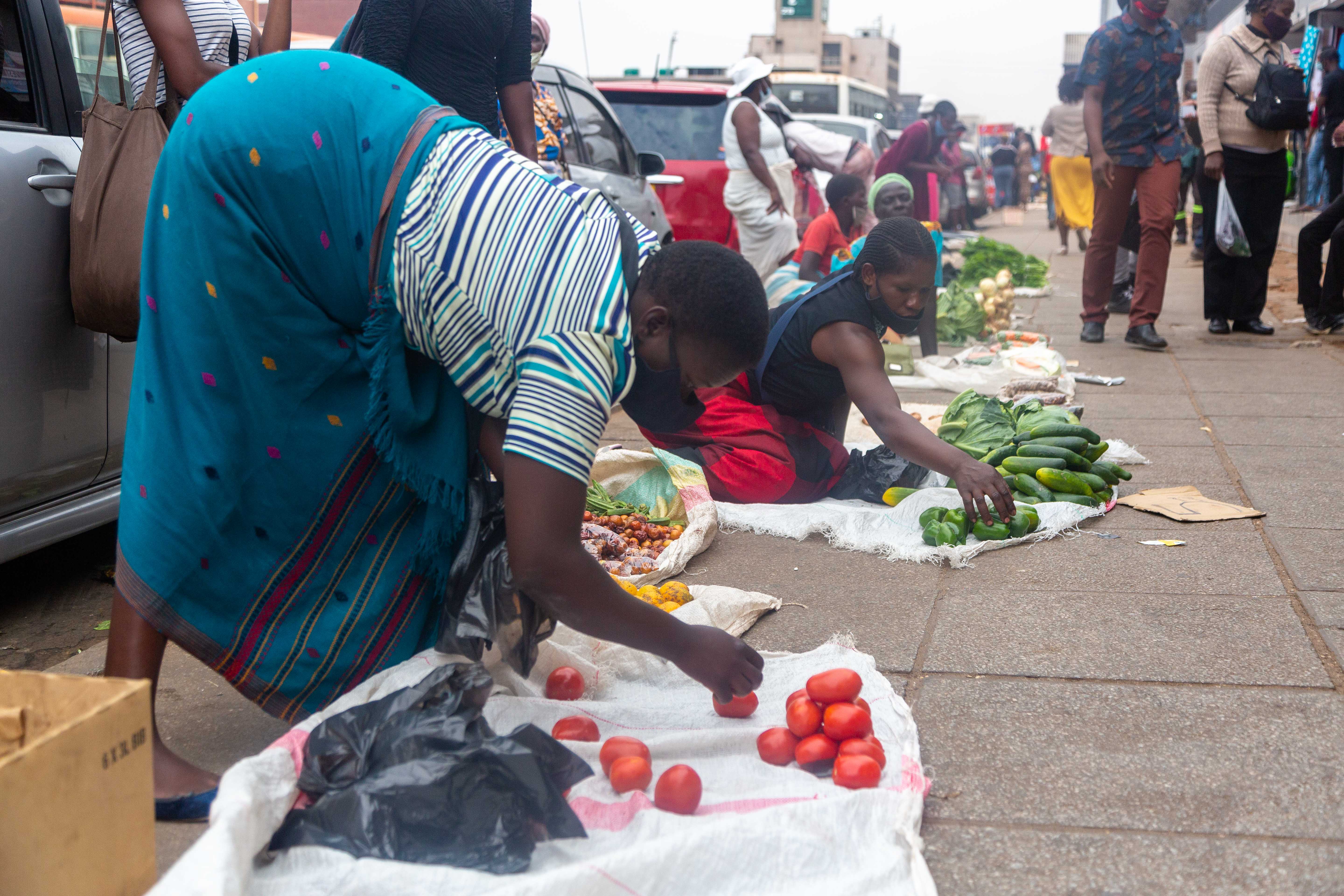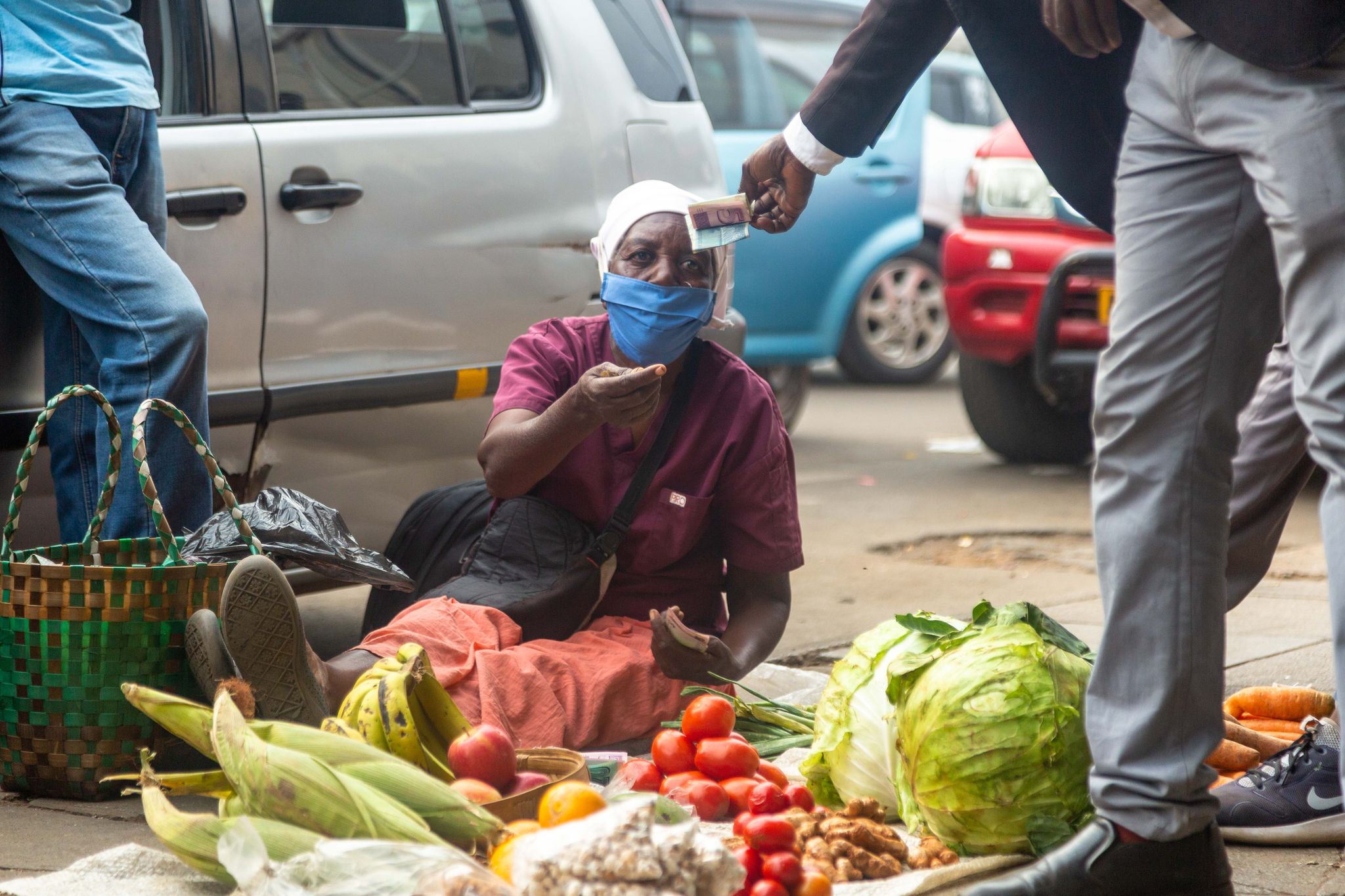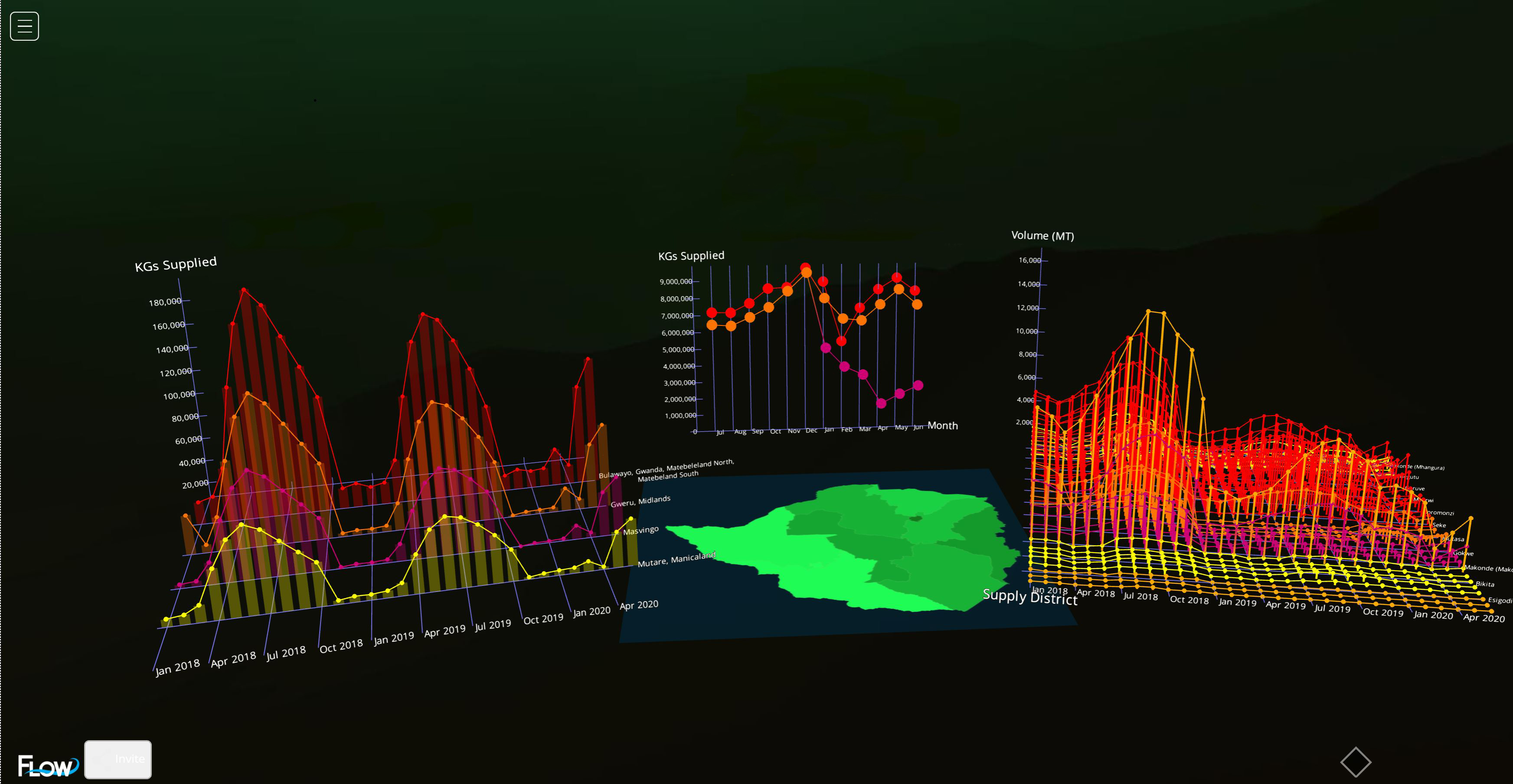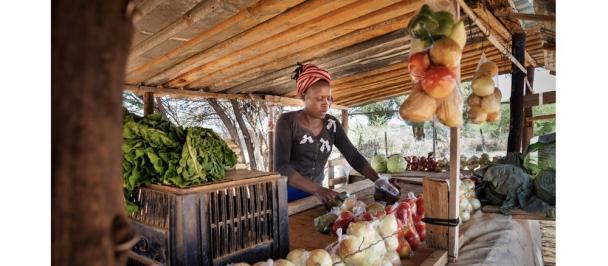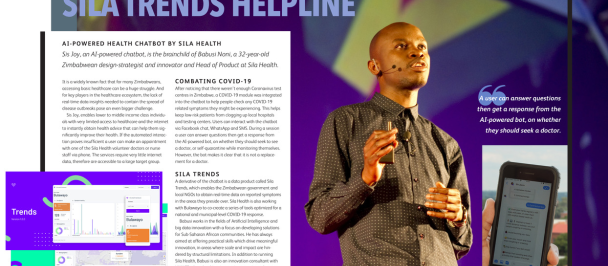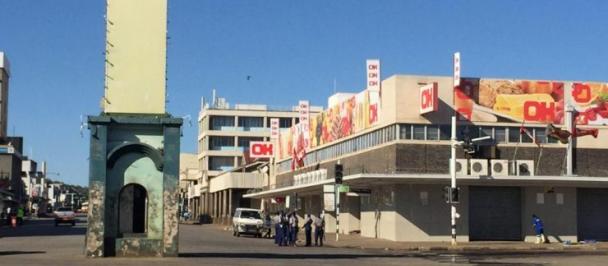Written by Gift Nthuli , Accelerator Lab, Head of Experimentation
Loading: Data-driven analysis of informal market and food supply chains in Zimbabwe
October 1, 2020
Vegetable vendors along the streets of Harare CBD
The UNDP digital strategy launched in 2019 highlighted the challenges and opportunities presented by a data-driven society and made an urgent call for UNDP and its diverse network of partners to innovate in ‘harnessing data’s potential to do good for more people, better and faster’. Coupled with the Strategic Offer In Africa, a blueprint that outlines UNDP's vision for Africa, and a commitment to fast-track the SDGs in Africa in the decade of action, the message is clear - we need to make data-driven decisions to accelerate the 2030 agenda. Today we are confronted with extemley hard problems in development, challenges that are often interdependent, complex to comprehend and dynamic. For us at UNDP Zimbabwe, complex, dynamic and interconnected only points at one thing - the informal economy.
The informal economy in Zimbabwe
Zimbabwe has the world’s second largest informal economy with over 60% of the population relying on informal activities for their source of income. The Zimbabwe Country Office believes the informal economy is a strategic bet as it has the potential to drive the country’s economic recovery. Informality is often misunderstood and criminalized, with big questions remaining unanswered - What pushes people to go informal? What does informality and formality mean to various businesses? How can informal businesses tap into formal structures and grow to create more jobs? Can the informal economy and government policies coexist?
By quantifying and studying the drivers behind informality in Zimbabwe we hope to work with the government to create an economic environment that empowers informality to create jobs, boost resilience and foster innovative solutions to local problems.
Within the informal economy, vendors are a subcategory of special interest to the Accelerator Lab as vending is often the only source of livelihood for the most vulnerable populations in urban society. So, when COVID struck and the government announced lockdown measures in March, the Lab began wondering what the impact would be for food supply chains and vendors operating in informal markets.
Vendor along the streets of Harare CBD. For the most vulnerable urban population vending tends to be their only source of income.
We sought to answer two key questions. First, what factors affect vendors, informal markets, and agricultural supply chains in Zimbabwe? Secondly, how and to what extent has COVID-19 exacerbated these vulnerabilities? We also wondered which datasets could give us a record of market performance pre COVID and during the lockdown. The Accelerator Lab embarked on partner mapping exercise which led to the discovery of Knowledge Transfer Africa, Magic Leap and Flow Immersive.
Leveraging the expertise of three private sector partners, and support from the UNDP Global Innovation Team, the Lab went ahead with the experiment to test whether visualizing daily informal market activities across Zimbabwe could yield insights that answered the two questions raised above. With the guidance of vendors and KTA, the Lab created a food basket of eight market produce that constitute daily necessities. The products were handpicked to provide us with an overview of market sentiment. The basket consisted of the following tabled items.
Category |
Description |
Constituents |
Daily necessities |
Products deemed household necessities. They are consumed daily across all economic classes. |
tomatoes, cabbage, leafy vegetables, onion |
Field crops |
Mostly grains or non-perishables, and components of the country’s staple diet. |
maize, groundnuts, round nuts, small grains, sugar beans |
High value crops |
Typically considered luxuries by low-income households at some point, they are a source of income for many smallholder farmers as they are popular among the middle and upper class. |
Carrots, peas, green beans, bananas, apples, oranges |
Substitute commodities |
As households fail to afford the more expensive foods they revert to cheaper substitutes. These items track the changes in purchase power of the society. |
Sweet potatoes, yams, rice |
Table 1: Break down of the food basket which was analysed by the accelerator Lab during the experiment. To save time and make the project cost effective, only the bolded produce from each category had data analysed.
For each of the produce in the food basket, 2.5 years’ worth of volume and pricing data were obtained from Knowledge Transfer Africa, a Harare based organisation that tracks daily supplies and pricing for farm produce supplied to markets across Zimbabwe.
Augmented reality
We chose to visualise and present the findings using augmented reality to create an immersive and interactive experience with the data. With the help of the UNDP Global Innovation Team, we worked with Flow Immersive to analyse and visualise supply volume and pricing data for the eight products in the food basket. Flow is a data visualisation company based out of San Francisco that specializes in collaborative storytelling using data. Flow stories are XR compatible meaning they can be viewed on any platform, from mobile phones, to laptops, VR headsets and AR headsets. For the most immersive experience users are encouraged to use augmented reality headsets like the Magic Leap, which offers an unparalleled up-close experience with the data.
The wait is (almost) over!
Over a period of two months the team worked hard to process the data, visualize and interpret it to tell a compelling story on the factors affecting vendors and informal markets supply chains and how COVID-19 has worsened the situation. Below is a snippet of our findings.
Photo 2: Snapshot from the presentation to be showcased during the side event at the 2020 United Nations General Assembly on the 1st of October 2020.
If you are looking at the image and wondering what all those lines mean or why the peaks and dips, then join us on Thursday, 8th of October 2020 for an augmented reality presentation of our key findings. We are excited to share our work at a side event during the UN general assembly and discuss next steps in the projects plus opportunities for collaboration. We will demonstrate how data can be used for decision making and accelerate the 2030 sustainable development Goals. Many thanks to the UNDP Global Innovation Team, UNDP Chief Digital Office, Flow, and KTA for pushing to make this the first data project of its kind in Zimbabwe a reality.

 Locations
Locations